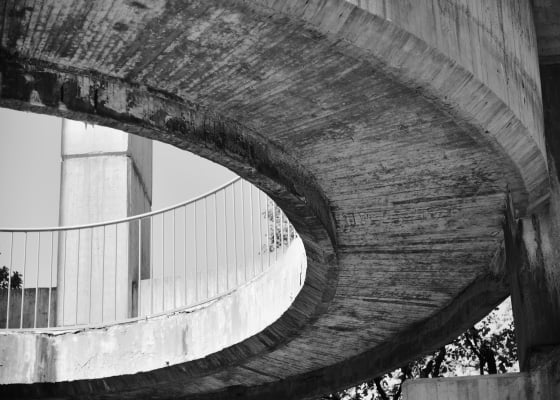The concept of time has always held an elusive place in architectural theory, influencing perceptions of beauty, permanence, and decay. However, recent decades have witnessed a subtle yet profound shift: time itself is no longer merely a silent force eroding stone or weathering steel. Instead, it has begun to assert itself as a tangible design material—a layered substance embedded in the walls, creaks, and cracks of structures long past their era of origin.
In contemporary projects, aged buildings are not just relics to be preserved or discarded; they have become raw inputs, rich with memory and narrative, fueling a growing architectural ethos that values patina, wear, and embedded histories.
This transformation goes beyond aesthetics. Aging structures today challenge contemporary designers and builders to reconcile the past with the present, not merely by replication but through reinvention.
The rust on a beam or the unevenness of an old brick wall becomes an intentional design choice, communicating continuity, context, and resilience. In this paradigm, time becomes a medium—an active agent that reshapes both process and perception.
Reimagining the Past: Integration Through Contextual Transformation
Modern architecture, once obsessed with sleek futurism, has gradually made room for a more nuanced form of expression—one that does not erase, but rather incorporates the traces of what came before. Central to this movement is the practice of reusing existing architectural elements and structures to create something both rooted and novel. This practice hinges on a philosophy that celebrates imperfection, irregularity, and the lived experience of materials.
The methodology commonly employed in such projects is known as adaptive reuse architecture. This approach refers to the process of repurposing buildings for viable new uses while retaining their historic features. Instead of demolishing outdated structures, architects reconfigure them—often radically—while keeping their skeletons intact. This not only conserves materials and reduces environmental impact but also cultivates a dialogue between eras.
What sets the approach apart is its seamless marriage of conservation and innovation. Architects are not simply preserving; they are reinterpreting.
A century-old warehouse might become a luminous art gallery, with its gritty textures providing a stark, powerful backdrop to polished exhibits. An abandoned factory might transform into an urban library, where exposed beams and industrial windows tell silent stories of labor and time.
The Textural Narrative of Materials in Decay
Time etches stories into physical matter. Rust blooms, paint peels, wood warps, and concrete cracks—not as failures of engineering, but as evidence of experience. In aging structures, these physical transformations become part of the design lexicon. Contemporary architects increasingly see value in retaining such imperfections, not simply as aesthetic flourishes but as conveyors of narrative depth.
The texture of a wall stained by decades of rain, or floorboards worn smooth by countless footsteps, can carry more emotional and historical weight than any pristine surface ever could. These signs speak to endurance, to the lived realities of the people who once inhabited or used the space. Instead of hiding such marks, modern design philosophies now frame them—sometimes literally—as features worth preserving and showcasing.
In some projects, architects may even halt restoration processes just before total repair, intentionally leaving rusted brackets or weathered doors untouched. This calibrated restraint requires skill, for it’s not about neglect, but careful curation of time’s visible impact. The aim is to evoke reflection, to subtly invite users to consider the structure’s journey. In this sense, buildings become biographies—open to interpretation, their materials imbued with silent recollection.
Memory as Structure: Emotional Topographies of the Built Environment
Every aging structure is a vessel of memory. Whether it was once a home, a mill, or a train station, the building has witnessed lives unfold within and around it. As architects today strive to engage more meaningfully with communities, they discover that retaining these emotional footprints significantly enhances the spatial experience in profound ways.
Rather than designing blank slates, contemporary projects that involve older structures often embrace their mnemonic dimension. Echoes of past use—faded signage, dented metal staircases, uneven walls—become emotional triggers, connecting visitors to the building’s history and, by extension, to the shared memory of a place. These elements don’t merely adorn; they inform how people move through and relate to a space.
In educational or cultural institutions, this dynamic becomes particularly powerful. A repurposed building that preserves its original identity can instill a sense of continuity in its users. It bridges generations and fosters collective remembrance without the didactic burden of plaques or exhibits. The structure itself becomes the message.
This emotional resonance isn’t reserved for grand projects. Even modest dwellings, when thoughtfully reimagined, can evoke powerful responses through the strategic retention of age-worn elements. Architects who understand this often conduct archival research or speak with former occupants to guide design decisions, not out of nostalgia, but to create spaces that feel psychologically and historically whole.
Designing with Time as a Living Component
If traditional architecture sought to defy time through permanence, monumentality, and resistance, then contemporary practice often chooses to collaborate with it. Architects now explore how buildings can change gracefully, how materials can age with intention, and how temporal rhythms can be built into the very design process.
This shift is partly technological, as advances in material science allow for more accurate prediction of how certain surfaces will age, discolor, or react over time. However, it is also philosophical: a deliberate shift away from static form toward dynamic expression. A wall designed today might be meant to rust over ten years, changing color and texture in a pre-imagined sequence. A façade may be crafted to catch and highlight the shadows of passing seasons, emphasizing time’s presence rather than resisting it.
Such thinking often translates into modularity, flexibility, and openness in design—qualities that enable buildings to accommodate different uses over time without compromising their integrity. In these cases, architecture becomes less about achieving a final state and more about initiating a process, allowing time to play its role as co-designer.
Designing with time, then, is not just a method but a mindset—one that accepts change, embraces aging, and sees decay not as a threat but as a poetic, even noble, transformation. In such work, time is not simply endured; it is cherished, respected, and ultimately, materialized.
We hope you found this blog post on When Time Becomes a Material: Aging Structures in Contemporary Projects, useful. Be sure to check out our post on Custom Structures for Large Estates: Ideas for Storage work, useful for more great tips!
Have Experience in the Moving Industry? Want an Additional Income Stream? Work With All Around Moving!
Partner with us, moving relocation consultants, and we’ll help you profit. Click here to learn more.






